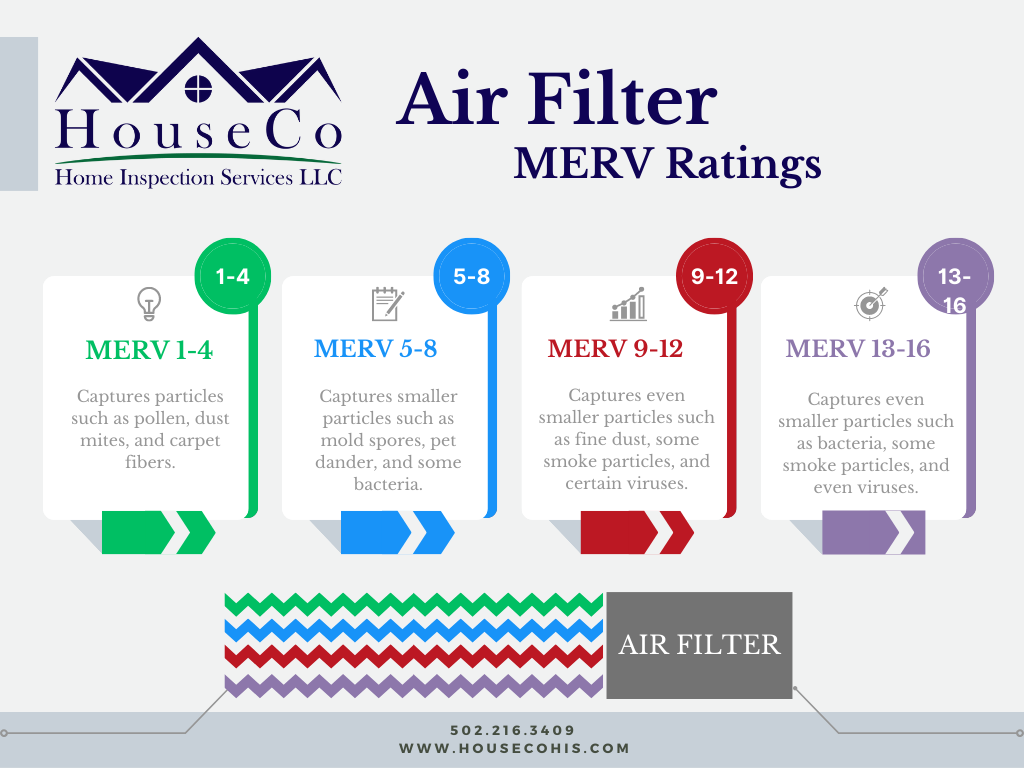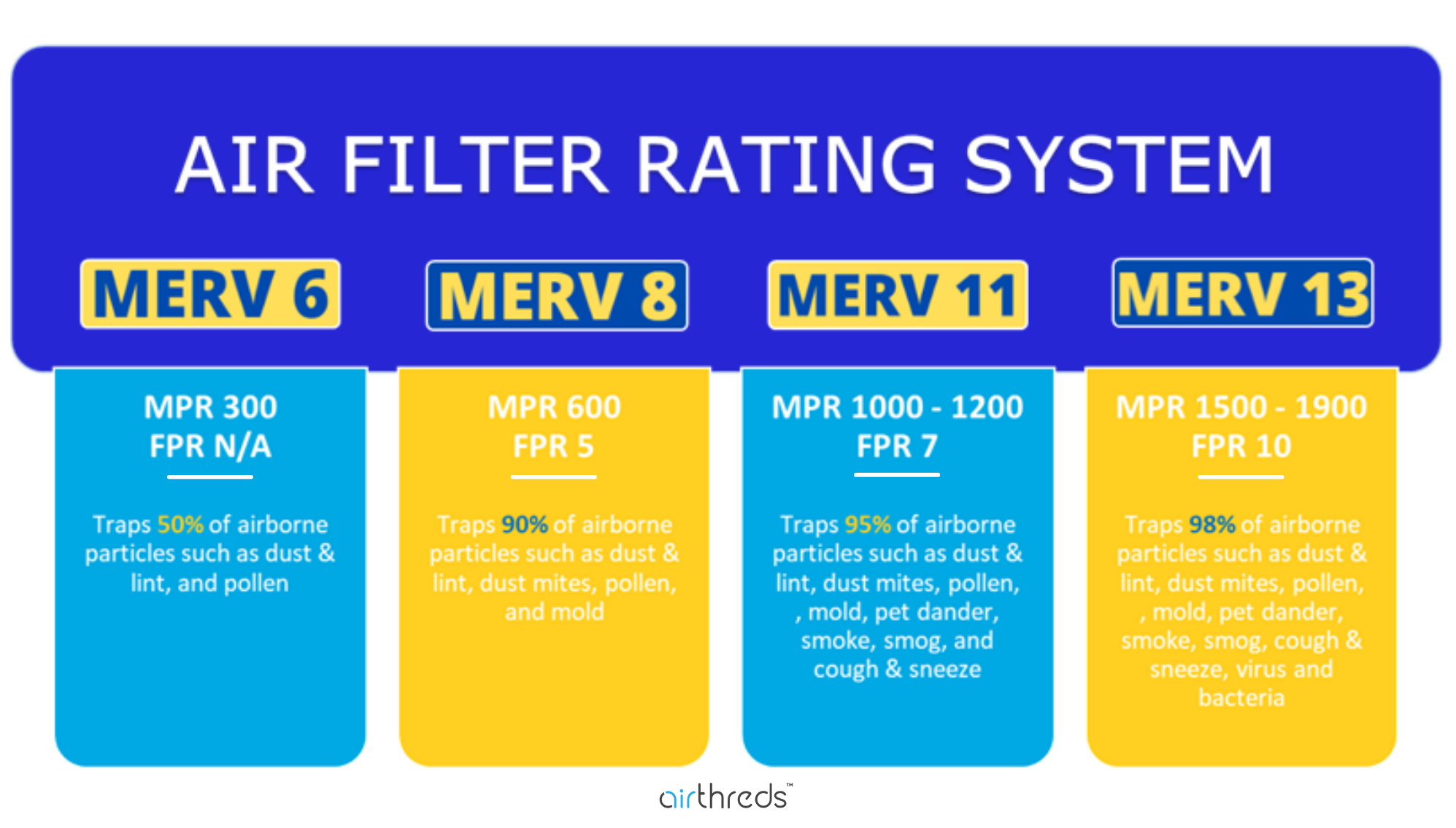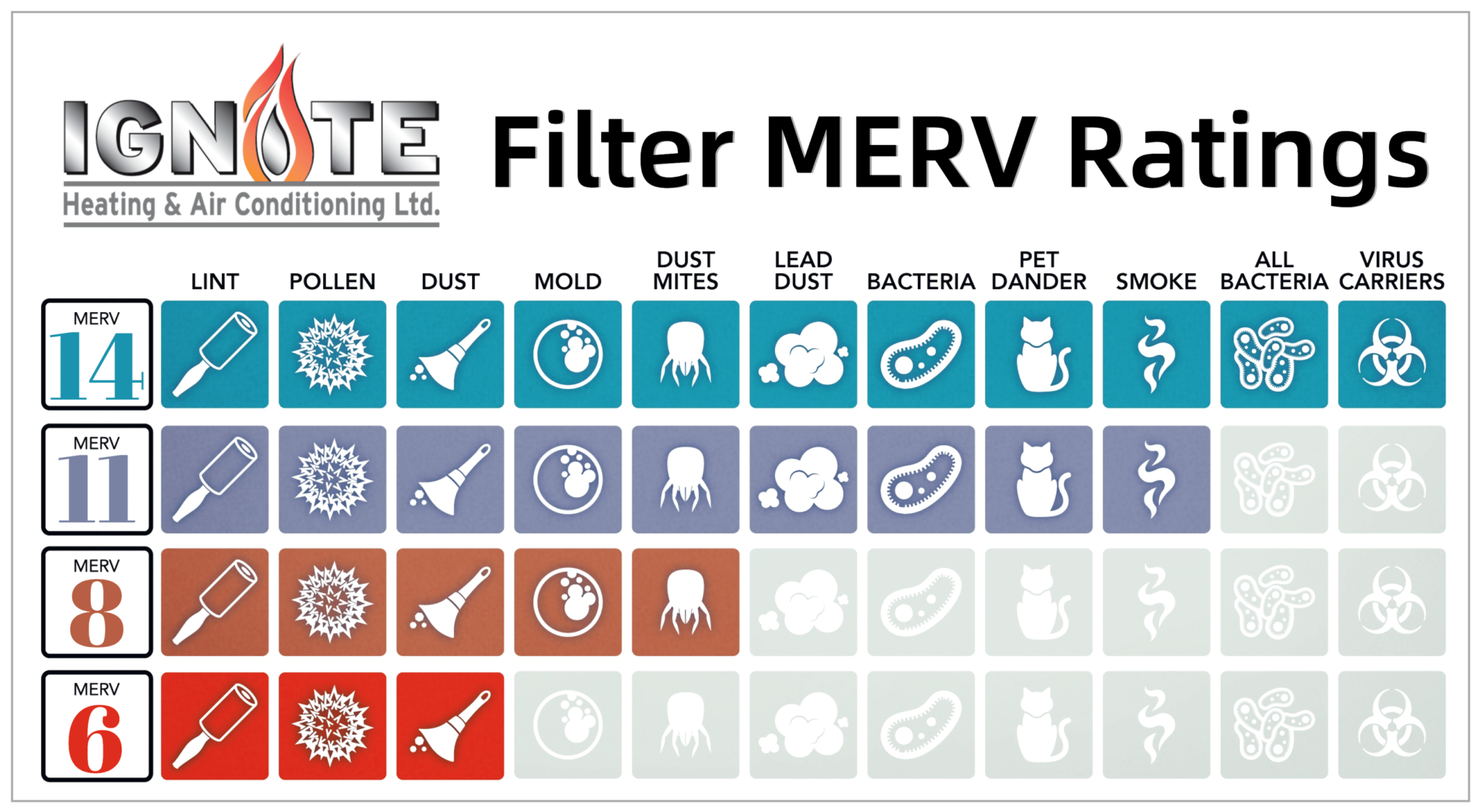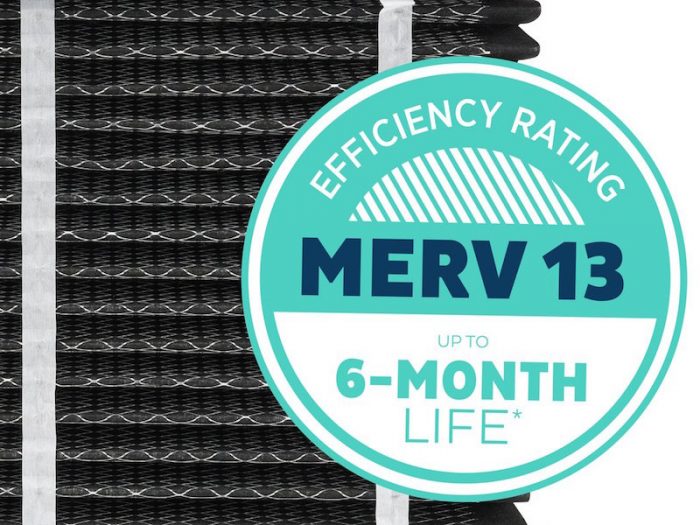What Does The Merv Rating Mean On Furnace Filters

Furnace filters are unsung heroes in the battle against high energy bills and poor indoor air quality. Often overlooked, these humble rectangles play a critical role in keeping your HVAC system running efficiently and protecting your family's health. Understanding the MERV rating on your furnace filter is the first step towards making informed decisions that can save you money and improve your well-being.
Decoding MERV: A Homeowner's Guide to Filter Efficiency
MERV stands for Minimum Efficiency Reporting Value. It's a rating system developed by the American Society of Heating, Refrigerating and Air-Conditioning Engineers (ASHRAE) to measure the efficiency of air filters. The MERV rating indicates how effectively a filter captures particles of different sizes, ranging from dust and pollen to mold spores and even bacteria.
The MERV scale runs from 1 to 20. The higher the MERV rating, the more efficient the filter is at trapping smaller particles. Here's a breakdown of what different MERV ratings typically capture:
- MERV 1-4: These are the least efficient filters, primarily designed to protect your HVAC equipment from large particles like dust, lint, and carpet fibers. They offer minimal air filtration benefits for indoor air quality.
- MERV 5-8: These filters capture more particles than MERV 1-4 filters, including pollen, dust mites, and mold spores. They're a good choice for homes with mild allergies or respiratory sensitivities.
- MERV 9-12: These are considered high-efficiency filters, capable of trapping smaller particles like fine dust, pet dander, and some bacteria. They're recommended for homes with moderate allergies, asthma, or pets.
- MERV 13-16: These filters are often used in hospitals and commercial buildings due to their ability to capture very small particles, including viruses and smoke. They're typically not recommended for residential use unless specifically advised by an HVAC professional.
- MERV 17-20: These filters are high-efficiency particulate air (HEPA) filters. They capture 99.97% of particles 0.3 microns in size or larger. They are typically used in clean rooms and medical facilities.
Choosing the Right MERV Rating: Finding the Sweet Spot
While a higher MERV rating might seem like the obvious choice, it's not always the best option for your HVAC system. Filters with higher MERV ratings are denser and restrict airflow more significantly. This increased restriction can put a strain on your furnace or air conditioner, leading to reduced efficiency, higher energy bills, and even premature equipment failure.
Think of it like trying to breathe through a thick cloth versus a thin one. The thicker the cloth (higher MERV rating), the harder it is to breathe (less airflow). Your HVAC system has to work harder to push air through a high-MERV filter, consuming more energy in the process.
The key is to find the sweet spot – a MERV rating that provides adequate air filtration without excessively restricting airflow. Most residential HVAC systems are designed to operate efficiently with filters in the MERV 8-12 range. Consult your HVAC system's manual or speak with a qualified technician to determine the recommended MERV rating for your equipment.
Impact on Energy Efficiency and ROI
Using the wrong MERV rating can have a significant impact on your energy bills. A filter that's too restrictive can reduce airflow, forcing your HVAC system to work harder and longer to achieve the desired temperature. This increased workload translates directly into higher energy consumption and higher monthly costs. In contrast, a filter with too low of a MERV rating will allow more particles to pass through, reducing indoor air quality and potentially damaging your HVAC equipment.
The ROI (Return on Investment) of choosing the right MERV rating comes in several forms:
- Lower energy bills: An efficient filter allows your HVAC system to operate at its optimal efficiency, reducing energy consumption.
- Extended equipment lifespan: By protecting your HVAC equipment from dust and debris, a good filter can help prevent breakdowns and extend the lifespan of your system.
- Improved indoor air quality: A filter with the appropriate MERV rating can remove allergens, dust, and other pollutants from the air, improving indoor air quality and reducing health problems.
- Reduced maintenance costs: A clean system requires less maintenance. A proper filter helps prevent dust buildup on coils, blower motors, and other components, reducing the need for expensive cleaning and repairs.
Smart HVAC and Filter Integration: Maximizing Efficiency
Integrating your HVAC system with smart home technology can further optimize energy efficiency and improve air quality. Smart thermostats, for example, allow you to remotely control your heating and cooling system, adjust schedules based on occupancy, and even receive alerts when it's time to replace your filter.
Some smart thermostats and sensors can even track the pressure drop across your air filter to determine when it needs replacing. This data-driven approach ensures that you're replacing your filter at the optimal time, maximizing its efficiency and minimizing energy waste. No more guessing when it's time for a replacement!
Imagine this: Your smart thermostat monitors the pressure difference before and after your filter. As the filter gets clogged, the pressure difference increases. The thermostat then sends you an alert: "Time to change your filter!" This proactive approach not only saves you money but also ensures consistent indoor air quality.
Rebates and Incentives for Energy-Efficient HVAC Systems
Many utility companies and government agencies offer rebates and incentives for homeowners who upgrade to energy-efficient HVAC systems and implement energy-saving measures, including using high-efficiency air filters. Check with your local utility company, state energy office, and the Energy Star program to see what rebates and incentives are available in your area.
Often, these rebates are tied to specific equipment standards, such as SEER (Seasonal Energy Efficiency Ratio) for air conditioners and AFUE (Annual Fuel Utilization Efficiency) for furnaces. Upgrading to a system that meets these standards, coupled with using the appropriate MERV-rated filter, can unlock significant savings and make your home more comfortable and energy-efficient.
The Role of HVAC Contractors: Your Partner in Energy Efficiency
Choosing the right MERV rating and optimizing your HVAC system for energy efficiency can be complex. That's where a qualified HVAC contractor comes in. A professional can assess your home's specific needs, recommend the appropriate MERV rating for your system, and ensure that your HVAC equipment is operating at its peak efficiency.
When selecting an HVAC contractor, look for someone who is certified, licensed, and experienced in energy-efficient HVAC systems. Ask about their knowledge of MERV ratings, airflow optimization, and smart home integration. A good contractor will be able to explain the benefits of different filter types, help you choose the right one for your needs, and provide ongoing maintenance to keep your system running smoothly.
Beyond filter selection, a contractor can help assess your ductwork. Leaky ducts can cause significant energy loss. Sealing and insulating your ducts can improve energy efficiency and indoor air quality.
Beyond MERV: Other Factors to Consider
While the MERV rating is a crucial factor to consider when choosing a furnace filter, it's not the only one. Other factors to consider include:
- Filter material: Filters are made from various materials, including fiberglass, pleated paper, and electrostatic materials. Pleated filters generally offer better filtration than fiberglass filters.
- Filter size: Make sure you choose a filter that's the correct size for your furnace. An improperly sized filter can reduce airflow and damage your equipment.
- Filter thickness: Thicker filters generally have a higher dust-holding capacity and last longer than thinner filters.
- Electrostatic filters: These filters use an electrostatic charge to attract and trap particles. They can be more effective at capturing small particles than traditional filters.
Making the Switch: A Step-by-Step Guide
- Consult your HVAC system's manual: Determine the recommended MERV rating for your equipment.
- Consider your specific needs: Do you have allergies, asthma, or pets? If so, you may need a higher MERV rating.
- Talk to your HVAC contractor: Get professional advice on choosing the right filter for your home.
- Monitor your energy bills: Track your energy consumption after changing your filter to see if there's a noticeable improvement.
- Consider smart HVAC integration: Explore the benefits of smart thermostats and sensors for optimizing energy efficiency and air quality.
By understanding the MERV rating and taking a proactive approach to air filtration, you can save money on energy bills, improve indoor air quality, and protect your HVAC equipment. It's an investment that pays dividends in comfort, health, and financial savings.
Ultimately, understanding and optimizing your furnace filter is a small change that can make a big difference in your home's overall efficiency and your family's well-being. Don't underestimate the power of this often-overlooked component of your HVAC system.










